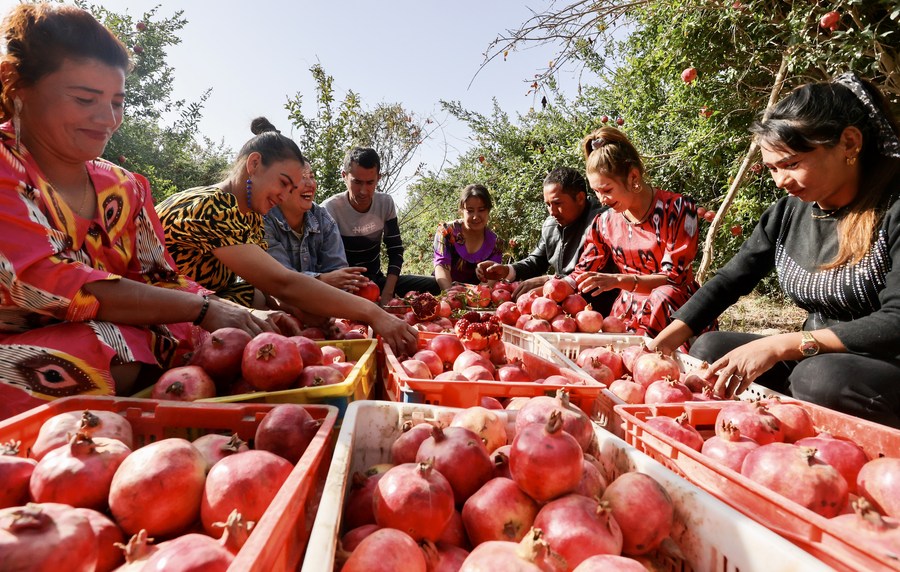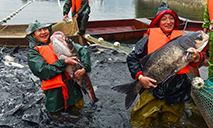Commentary: U.S. fabrication of "forced labor" in Xinjiang: lies still lies

Villagers pick pomegranates in Qira Town of Qira County in Hotan Prefecture, northwest China's Xinjiang Uygur Autonomous Region, Oct. 1, 2021. (Photo by Xu Xiaolong/Xinhua)
BEIJING, Dec. 22 (Xinhua) -- The latest U.S. Congress bill on sanctions against China's Xinjiang Uygur Autonomous Region has added a new footnote for the U.S.-concocted lies of "forced labor" in the region, and further exposed U.S. attempts to interfere in China's internal affairs and undermine its stability and development.
The passage of the so-called "Uyghur Forced Labor Prevention Act" is a new manifestation of Washington cooking up lies and creating troubles on Xinjiang-related issues, seeking to contain China and holding back the development of the world's second largest economy through political manipulation and economic bullying in the name of "human rights."
The United States has been consistently playing the Xinjiang card and placing the label of "forced labor" on the region. But the U.S. allegation can hardly hold water at all.
In fact, from 2014 to 2019, the total number of people employed in Xinjiang rose from 11.35 million to 13.3 million, an increase of 17.2 percent. The income of residents and workers has increased steadily.
Workers' job preferences have always served as an important reference for the local government of Xinjiang in designing its employment policies, expanding employment channels, creating jobs, organizing vocational training sessions, and providing placement services.
Workers of all ethnic groups in Xinjiang always choose their jobs of their volition, and there is no coercion involved.
With the implementation of a series of policies and measures to boost employment in the region, Xinjiang has basically achieved the goal of ensuring that every family has access to employment, everyone has a job, and everyone can earn a monthly income.
The so-called "forced labor" allegation in Xinjiang's cotton production cannot hold ground given the fact that the region, the largest high-quality cotton production base in China and an important producer of the crop across the world, has seen mechanized and intelligent cotton planting in recent years.
The development of the cotton industry has improved the lives of growers, textile workers and their families. According to the National Bureau of Statistics, cotton output in Xinjiang topped 5.1 million tonnes this year, maintaining its first rank in China for over two decades.
While certain U.S. politicians picked the label of "forced labor" to defame Xinjiang, the label in fact should be pinned on the United States itself. There are approximately 500,000 child farmworkers in the United States, roughly 240,000 to 325,000 women and children are victims of sexual slavery, and up to 100,000 people were trafficked into the United States for forced labor annually over the past five years.
The Chinese often say that as a clay figure cannot survive rain, lies cannot stand scrutiny. The U.S. egregious scheme of containing China with Xinjiang-related issues further reveals the true face of some U.S. politicians who have stopped at nothing to smear and slander Xinjiang.
Regardless of all the clamors of these U.S. politicians, Xinjiang will only make faster progress in its prosperity and development, and so will the whole of China.
Photos
Related Stories
- NW China’s Xinjiang builds big business with expanding regional nang industry
- Xinjiang promotes high-quality development of winter economy
- U.S. military-industrial complex sees war as shortcut to profits
- Xinjiang people reject "forced labor" rumors
- No "forced labor" in Xinjiang: A revealing trip to U.S.-sanctioned silicon factory
Copyright © 2021 People's Daily Online. All Rights Reserved.










